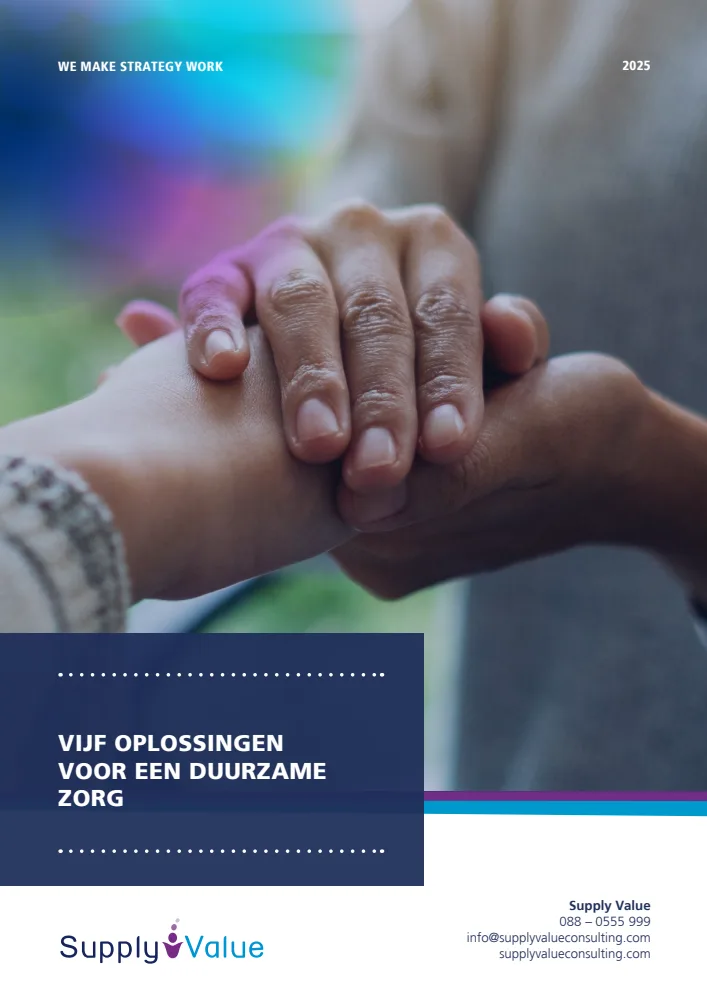What can an optimal asset utilization strategy do for your organization? And what does asset utilization mean for the transportation sector in particular? The transportation sector faces many challenges, with sustainability being one of the themes that is becoming increasingly important. In addition, cost reduction is a spearhead for many organizations. Both sustainability and cost savings can be achieved by working more efficiently. It is estimated that 40 to 60% of the transport sector’s vehicles are driven empty. Efficiency is achieved by utilizing the available assets as optimally as possible; an important key figure here is asset utilization. This insight into asset utilization will show you what this index can mean for the transport sector.
Asset utilization as a KPI
Asset utilization is a financial and operational metric that are both strongly related. First, asset utilization, also known as asset turnover, is used in finance to express how much revenue is generated for each asset (assets) a company owns. This involves dividing the revenues of a given period (generally 1 year) by the average assets (assets) of the same period. For example, from January 1, 2019 to December 31, 2019, a transportation company owns several trucks with a total average book value of €800,000. In addition, the company owns a commercial building that year with an average book value of €200,000. Thus, the average book value of the assets present in the year in question is €1,000,000. The transportation company’s revenues in 2019 totaled €1,500,000; the asset turnover ratio is then: €1,500,000/ €1,000,000 = 1.5. An asset turnover ratio of 1.5 means that €1.5 is earned for every euro of assets. For logistics services, we see that the asset turnover ratio is often around 1.2, while for rail transport it is even lower with an asset turnover ratio of 0.35 (CSIMarket, 2021). Especially the asset turnover ratio of rail traffic in particular is low, but this can be explained by the fact that it is a capital-intensive sector. This brings us to the operational application of asset utilization because by making efficient use of the assets, less capital is needed which increases the financial asset utilization ratio resulting in more profitability.

Figure 1 Example Asset turnover
Making asset utilization measurable
The operational application of asset utilization measures the extent to which an asset is utilized relative to the theoretical maximum feasible. For example, a truck is theoretically available for trips 24 hours a day, 7 days a week, 365 days a year. However, the maximum capacity is never fully achieved due to various reasons. Figure 1 shows which factors influence the failure to achieve maximum capacity and thus the failure to achieve maximum asset utilization. First of all, the left side shows the total available time, i.e. 24 hours a day, 7 days a week and 365 days a year. However, this full potential is never fully utilized because an asset is never fully operational. The reason for this is that an organization is almost never in operation for the full year because there are days off such as Christmas and New Year’s Day. What remains is the time available for operational activities which, however, is also never fully utilized due to planned downtime with, for example, performing preventive maintenance or when employees need to take breaks. The remaining available time for transportation is then also never fully achieved due to unplanned downtime due to breakdowns requiring corrective maintenance. Furthermore, maximum performance is often not fully achieved because performance losses occur due to delays or because, for example, empty runs occur. Finally, quality losses occur in every process. For example, accidents, incorrect or incomplete loading and unloading or other unforeseen circumstances can lead to lower customer satisfaction.

Figure 2 Operationalization of Asset Utilization
Creating an effective asset utilization strategy
Asset utilization offers the opportunity to take a critical look at the use of assets within an organization. Figure 2 showed what asset utilization can mean for the transportation industry and which knobs can be turned to achieve higher efficiency and thus greater profitability. Based on the various factors, an asset utilization strategy can be formulated. An effective asset utilization strategy is created based on three topics, namely optimizing trips, optimizing maintenance and investing in safety.
- Optimizing trips. Optimizing trips ensures that the available time can be used as efficiently as possible. To optimize trips, for example, a planning system can be used that takes into account factors such as loading and unloading times, employee breaks, total loading capacity and minimizing empty driving. In addition to cost savings, optimization also provides sustainability benefits. In fact, by working more efficiently, the same goal can be achieved with fewer resources, which means less environmental impact.
- Optimizing maintenance. When optimizing maintenance, it is important that maintenance is preventive as much as possible and corrective as little as possible. Predictive maintenance offers a solution to perform maintenance preventively as much as possible. Supply Value recently wrote a whitepaper about it with an eight-step plan to implement predictive maintenance. By predicting maintenance as much as possible, the percentage of unplanned downtime decreases, increasing asset utilization. Optimizing maintenance further ensures that assets are handled sustainably. Maintaining assets in a timely manner extends their lifespan, resulting in cost savings.
- Investing in safety. Within the transportation sector, accidents regularly occur with major consequences for asset utilization. In 2019, 17 trucks were involved in accidents or stranded with breakdowns every day, preventing or delaying the delivery of goods (STIMVA, 2019). To counter this, it is important that employees are equipped behind the wheel and have the proper knowledge to drive a vehicle. In addition, well-maintained assets also contribute to a safe working environment that prevents accidents. Investing in safety on the one hand ensures more satisfied customers because goods are delivered on time, and on the other hand, cost savings can be realized by reducing the number of accidents.
This insight clarifies what asset utilization means for the transportation industry and the opportunities that exist to make more efficient use of assets resulting in cost savings. Do you have any questions as a result of this insight? Or would you like to know what asset utilization can mean for your organization? If so, please contact one of our expert consultants. Or download the full insight below.


